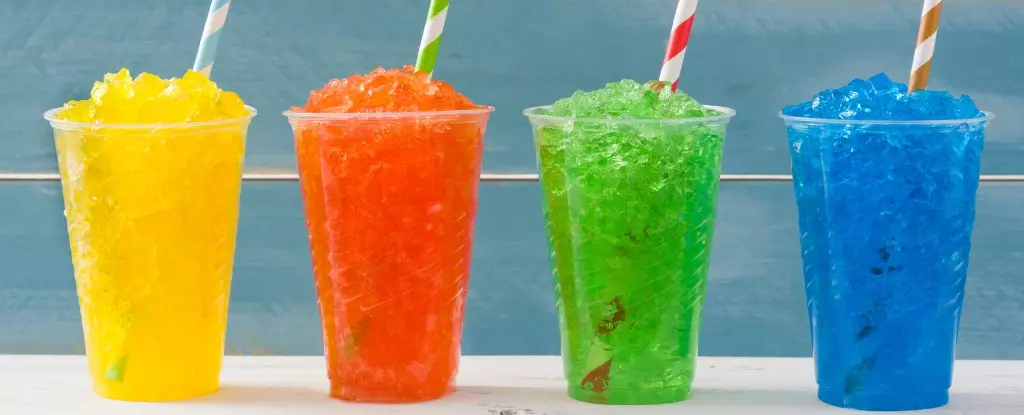Brightly colored slushy drinks have long been a summer staple for children, promising icy delight with flavors that dazzle the senses. However, emerging research sheds light on a concerning trend: these frozen beverages, often marketed to allure the young, may contain glycerol, a substance that poses serious health risks. The popularity of slushies surged since their inception in the 1950s, but today’s findings paint a troubling picture of their safety, particularly for children under eight.
The recent investigation into the medical records of 21 children, aged two to seven, who required emergency medical attention after consuming slushies is alarming. These cases underline how swiftly the situation can deteriorate, with many children experiencing immediate symptoms that required urgent care. Shockingly, the potential consequences of glycerol intake—ranging from unconsciousness to dangerous fluctuations in blood sugar levels—highlight a critical oversight in how we view these summer treats.
Glycerol: A Sweetener with Dark Twists
Glycerol, while commonly used as a sweetener and anti-freezing agent in food production, carries risks that many parents might not fully understand. The findings suggest that glycerol intoxication can lead to severe reactions in children, such as loss of consciousness and acidosis. This risk is magnified in younger children whose bodies are still developing and may not handle such substances effectively. While slushy manufacturers often claim these drinks offer a sugar-free alternative, the hidden dangers pose an even more significant health threat than traditional sugary drinks.
This situation reveals a paradox: as society becomes increasingly aware of high sugar consumption and implements sugar taxes to promote healthier choices, we may inadvertently overlook the implications of other ingredients being used as replacements. Slushy drinks filled with glycerol could be a response to these regulations, leading to a situation that requires immediate attention from both parents and health authorities.
Raising the Alarm and Recommendations
Currently, food safety agencies in the UK and Ireland advise against giving slushies containing glycerol to children aged four and under. However, researchers are advocating for a reevaluation of this guideline, suggesting the age limit should extend to include all children under eight. This adjustment is not merely a bureaucratic recommendation but a necessary precaution in light of reported incidents. It calls for parents, clinicians, and public health organizations to take proactive measures to safeguard children.
Echoing these concerns are parents like Elsa Qorri, whose experiences resonate with the fears many others may hold. Witnessing her daughters struggle with brain freeze after consuming slushies has understandably made her cautious. These anecdotal accounts underscore the necessity for clear messaging from governmental bodies about the potential risks associated with seemingly benign seasonal treats.
As awareness grows, prioritizing children’s health in the face of marketing tactics is crucial. The onus is not solely on parents to navigate this landscape but also on health organizations to ensure that clear, accessible information is available. Awareness and proactive measures are essential in safeguarding the well-being of our youngest, especially when faced with such enticing yet potentially perilous options.


Leave a Reply